Уголовное наказание: понятие, система, объект назначения, состав отбывания. Монография - [70]
в) не желает, самонадеянно рассчитывает на то, что наказание не будет отбыто и последствия не наступят.
Conclusion
The conducted study of the notion, system, object of imposition, contents of the executing the criminal penalty and its features (elements) led to the following basic conclusions:
I. The list of the features of the criminal penalty includes the following: 1) penalty is a legal consequence of a crime; 2) penalty is characterized by definite contents; 3) penalty possesses definite issue; 4) penalty possesses a definite form; 5) penalty is characterized by a definite order and causes of application (sentencing and executing) and servicing; 6) penalty brings definite consequences; 7) penalty is applied for definite socially positive aims: restoration of social justice, and for the correction of the convict and prevention of new crimes;
II. The Article 43 of the Criminal Code of the Russian Federation needs to be amended by the following, “Bases for achievement of the aims of the criminal penalty is compulsion, bringing all the features of contents of sentencing, executing, servicing the penalty”;
III. The criminal penalty should be treated as:
– legal consequence of a crime, characterized by definite contents, essence, form, order and conditions of application (sentencing and executing) and servicing, causing definite consequences and bringing definite socially useful aims: restoration of social justice, correction the convicts and prevention of new crimes;
– a complex of provided by the law, inter-depended and inter-related features and elements (contents of sentencing, executing and servicing the criminal penalty), characterizing its object, objective side, subject and the subjective side;
IV. The system of the criminal penalty is characterized by seven basic features: 1) the system of penalty is a legal consequence of the system of crimes; 2) the system of penalty is characterized by definite contents; 3) the system of penalty possesses a definite issue; 4) the system of penalty has a definite form; 5) the system of penalty is characterized by a definite order and conditions of application and functioning; 6) the system of penalty brings definite consequences; 7) the system of penalty is applied for definite socially positive aims: restoration of social justice, and for the correction of the convict and prevention of new crimes;
V The contents of the system of penalty is characterized by the following elements: 1) the system of penalty is socially conditioned by contemporary conditions of social life; 2) the system of penalty represents a complex (variety) of elements (measures of punishment, definite sub-systems); 3) elements of the system of penalty are interdependent and interact with each other (are interchangeable, mutually exclusive and compatible); 4) elements of the system of penalty are defined only by the criminal legislation and only this way they could bee amended and liquidated; 5) the number of elements is full and is not to be expanded;
VI. A number of types of punishments and other measures, provided by the foreign legislation, could be also applied in Russia. They are: 1) punishments for the legal entities (liquidation, term-less or term restriction of activities for the legal entity, performance of definite obligations by the legal entity within a definite term, appropriation, fine, promulgation of the sentence, etc.), applied in Belgium, Lithuania, Moldova, the USA, France, etc.; 2) penalty in the form of deprivation of some political or civil rights, suchlike measures are applied in Argentine, Belgium, Netherlands, P.R. of China, Lithuania, Norway, Poland and other states; in order to modernize the system of penalty, it is advisable to use the penal impact of definite types of penalty, applied in Russia for a number of years (i. e. deprivation of right to take definite positions or restriction of activities, fine, etc.);
VII. The system of the criminal penalty should be understood as a legal consequence of the system of crimes, characterized by definite contents, essence, form, order and conditions of application, functioning, bringing definite consequences and taking for definite socially useful purposes: restoration of social justice, correction of the convict and prevention of new crimes;
VIII. The object of imposition of the penalty should be understood as elements of legal status (situation) of a person, adjudged guilty in a crime, i. e. rights, obligations and legal interests, provided with the penal impact by the criminal legislation;
IX. The Article 43 of the Criminal Code of the Russian Federation should be amended by the fourth part, including the following, “objects of imposition of the criminal penalty could not be: human’s right for life; human’s right to defense his health; human dignity of a person, guilty in a commitment of a crime; nationality of a person and exile from the country; freedom of conscience and religion; right of access of the convict; right of the convict to communicate with the outer world;
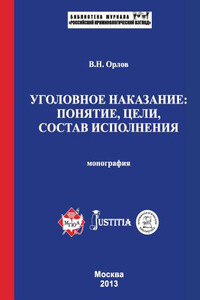
В монографии рассматриваются понятие, содержание, цели уголовного наказания, состав исполнения уголовного наказания. Впервые комплексно проанализированы объективные и субъективные признаки (элементы) состава исполнения уголовного наказания.Для студентов, адъюнктов, аспирантов, преподавателей юридических вузов и факультетов, практикующих юристов, работников уголовно-исполнительной системы и иных правоохранительных органов, может представлять интерес для всех, кто интересуется уголовным наказанием.
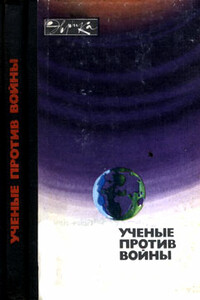
В сборнике крупнейшие советские ученые-академики Александров А., Велихов Е., Марков М. и другие решительно выступают против угрозы термоядерной войны и рассказывают о ее катастрофических для всего человечества последствиях. Издание рассчитано на массового читателя.Fb2 создан по материалам сайта http://nplit.ru «NPLit.ru: Библиотека юного исследователя».
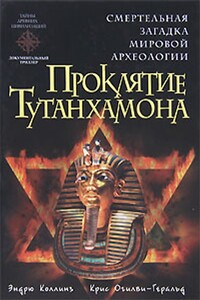
День 4 ноября 1922 года стал одним из величайших в истории мировой археологии. Именно тогда знаменитый египтолог Говард Картер и лорд Карнарвон, финансировавший раскопки, обнаружили гробницу фараона Тутанхамона, наполненную бесценными сокровищами Однако для членов экспедиции этот день стал началом кошмара. Люди, когда-либо спускавшиеся в усыпальницу, погибали один за другим. Газеты принялись публиковать невероятные материалы о древнем египетском демоне, мстящем археологам за осквернение гробницы…В своей увлекательной книге известные исследователи исторических аномалий Коллинз и Огилви-Геральд подробно изложили хронологию открытия гробницы Тутанхамона и связанных с этим загадочных событий Основываясь на письмах и статьях знаменитых археологов, а также воспоминаниях очевидцев, авторы задаются сенсационным вопросом: не могли ли Говард Картер и лорд Карнарвон обнаружить в гробнице Тутанхамона некую взрывоопасную тайну, способную в случае огласки перевернуть сложившиеся взгляды на библейскую и мировую историю? И не могла ли эта тайна стать для первооткрывателей усыпальницы реальным проклятием — осуществляемым не мстительными богами Египта, а наемными убийцами на службе влиятельных политических сил, которым могла помешать неудобная правда?
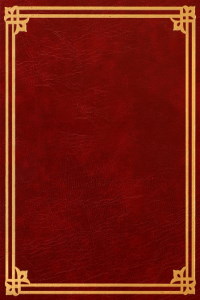
Земная цивилизация достигла критического порога, и потеря людьми интереса к космосу лишь вершина айсберга. Первые космические программы имели ясную цель, объявленную Циолковским: расселение человечества по Солнечной системе. Сейчас цель потеряна как для развития космонавтики, так и для человечества в целом. Оно должно сдать экзамен на разумность и обеспечить себе переход на новую ступень развития.(«Техника-молодежи», № 8/2004)
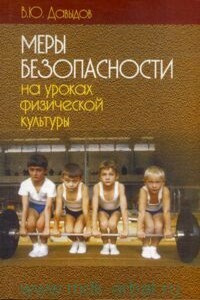
Настоящее пособие знакомит учителей физической культуры с нормами санитарно-гигиенического режима, мерами пожарной безопасности на уроках физкультуры. В нем представлены нормативные акты, формы документов, извлечения из методических указаний, правил и инструкций по охране труда, регламентирующие безопасность проведения физкультурно-оздоровительной, учебной и внеклассной работы в образовательных учреждениях; показан порядок и правила проведения инструктажей по мерам безопасности.Пособие предназначено для студентов, преподавателей, учителей физической культуры и школьников.
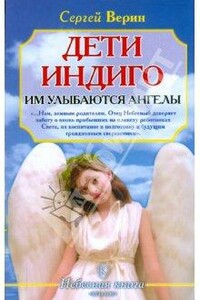
Эта книга о наших детях, о происшествиях и явлениях, связанных с ними и выходящих за рамки традиционного мировосприятия.Вас, уважаемый читатель, ждут встречи с героями невероятных историй, удивительными людьми, участниками и очевидцами феноменальных событий, необъяснимых с точки зрения логики и «приземленного» мышления.Также вы получите возможность побывать в гостях у известной духовной целительницы Зины Ивановны, побеседовать с ней, вместе проанализировать почерпнутую информацию. Эта необычная женщина будет комментировать те удивительные истории, которые рассказаны на этих страницах.

В книге рассказывается история главного героя, который сталкивается с различными проблемами и препятствиями на протяжении всего своего путешествия. По пути он встречает множество второстепенных персонажей, которые играют важные роли в истории. Благодаря опыту главного героя книга исследует такие темы, как любовь, потеря, надежда и стойкость. По мере того, как главный герой преодолевает свои трудности, он усваивает ценные уроки жизни и растет как личность.